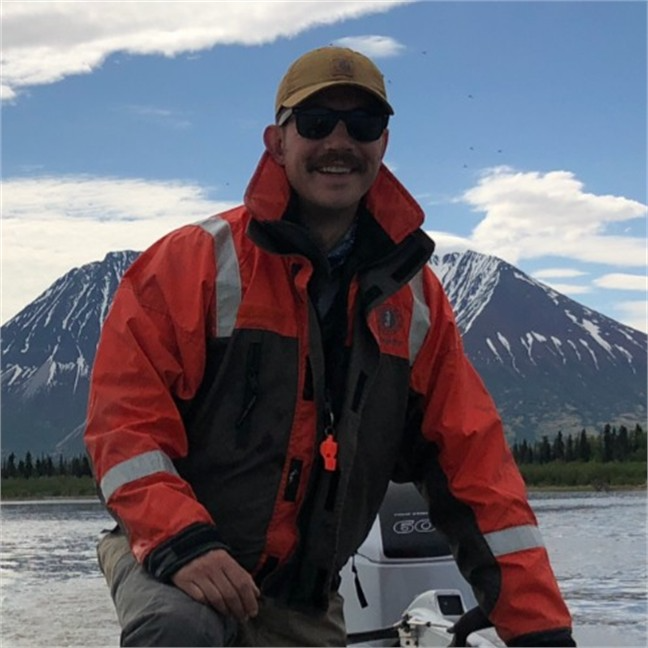
College to Career spotlight: Q&A with anthropology alum Brendan Doucet
Meet Brendan Doucet, a dedicated National Park Service archaeologist and section 106 coordinator for the Western Arctic National Parklands (WEAR). Brendan's journey from Wayne State University's anthropology program to his current role in Kotzebue, Alaska, showcases the significant impact of his academic training and fieldwork experiences.
In this Q&A, Brendan shares insights into his career, the influence of his education and why he recommends WSU's anthropology program to aspiring students. Read on to learn more about Brendan's path and the diverse opportunities in the field of archaeology.
How long have you been a National Park Service archaeologist and what other related positions have you held in the past?
I am currently a National Park Service archaeologist and section 106 coordinator for the Western Arctic National Parklands (WEAR) based out of Kotzebue Alaska. These parklands encompass approximately 11,000,000 acres of Iñupiaq land and are comprised of Kobuk Valley National Park, Cape Krusenstern National Monument, and Noatak National Preserve.
My duties revolve around managing the archaeology program at WEAR which means I do everything from creating and submitting project proposals for funding, conducting fieldwork on Park Service projects as well as on projects we partner with outside universities to complete; assisting in consultation with tribal governments on Park activities and projects, and conducting reviews of internal and external projects as required under the National Historic Preservation Act, section 106. I’ve only been in this position for two months however I’ve spent the last five years working my way up the Park Service ladder from being a seasonal archaeology field technician, to being a long-term employee, to being a permanent archaeology program manager in my current position.
How did your training in anthropology help to shape your career?
The training I received while attending Wayne State set me up to be a successful archaeologist in numerous ways. I feel very fortunate that I was able to participate in the survey-based fieldwork on the Survey and Landscape Archaeology of Montserrat project under Dr. Krysta Ryzewski. Not only did I get an excellent introduction to GIS software and LiDAR surveys as part of this project but I was also able to gain fieldwork experience excavating sites and surveying for cultural resources.
WSU’s anthro department was also excellent for connecting undergrads with graduate students to facilitate volunteer work in the lab. Through lab analysis courses and this volunteer work, I gained a valuable foundation in laboratory methods in artifact analysis that prepared me to go on to conduct my own field and lab work as part of my Master’s thesis.
What's a typical day at work like for you?
My typical day at work varies greatly depending on the time of year. The late winter and early spring mostly consist of office work where I complete section 106 reviews of internal and external projects as well as prepare for the coming field season. My summers are usually a mix of some office work and fieldwork where I might spend weeks to close to a month camping out to complete archaeological fieldwork. This fieldwork can range from floating a river in pack rafts and surveying high probability areas along the way to conducting site condition assessments on known sites, to running ground penetrating radar or magnetometer equipment to unobtrusively assess known and new sites for buried cultural materials. The fall time usually consists of writing reports on the summer’s fieldwork and writing proposals to fund future projects.
How have your experiences in WSU's anthropology program affected your career choices and preparation for the job you have now?
My education at Wayne State taught me how to think outside of the box when it comes to conceptualizing how archaeology can be used to study the recent past to inform current societal conditions. I feel very fortunate to have gotten such a great education in historical archaeology. I became interested in studying and conducting fieldwork at working-class sites through my experience at sites within Detroit such as the excavations at Michigan Central Station. Krysta Ryzewski was such an excellent and encouraging mentor who gave me the education and tools I needed to pursue my own interests which led me to conduct a faunal analysis of items excavated from the site in front of Michigan Central Station.
These experiences got me interested in studying working-class history through the lens of archaeology and I went on to expand on this during my graduate studies in the industrial archaeology program and Michigan Tech University. These research interests and experiences have also become an asset for me in applying for jobs in the NPS. Many parks have industrial and working-class heritage sites within their boundaries but often have little in the way of interpretation or documentation of them. Having an interest in a niche such as this has helped to make me a competitive candidate while competing for job openings.
Why would you recommend WSU and our anthropology program to prospective students? What makes the program or university distinct from other options they might be considering?
I would recommend Wayne State anthro to any student interested in community-based historical archaeology. The anthropology department is filled with excellent faculty and staff who care about the community they work in. There is no shortage of opportunities to pursue research interests, volunteer on projects and gain a unique and marketable education. I personally really enjoyed being encouraged to pursue my interests and I think this culture in the anthro department is one of the many things that makes it unique and successful.